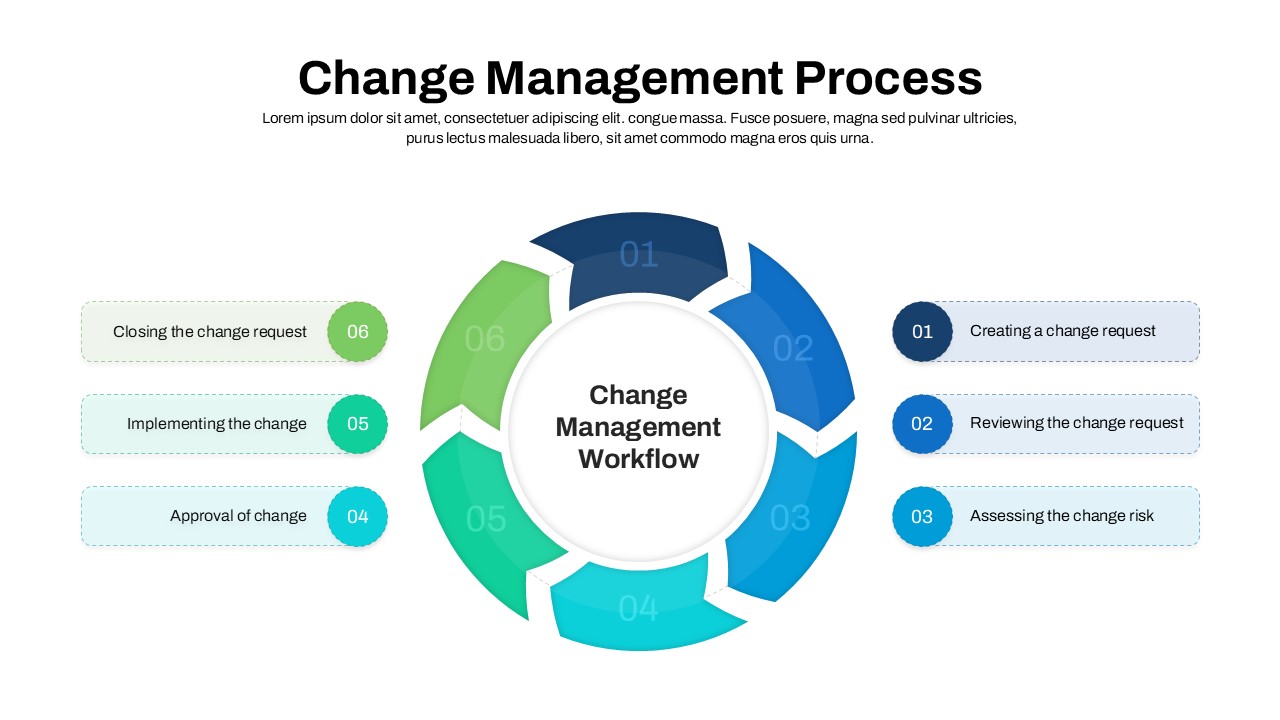Change Management Circular Process PowerPoint Slide

Description
This versatile change management infographic slide presents a six-step circular workflow to guide organizations through the complete change lifecycle. At its center, a white ring frames the title “Change Management Workflow,” while six gradient-colored segments—ranging from navy blue for step 01 through teal and green for step 06—form a continuous loop. Each numbered segment corresponds to a paired text box on either side of the diagram: “01 Creating a change request,” “02 Reviewing the change request,” “03 Assessing the change risk,” “04 Approval of change,” “05 Implementing the change,” and “06 Closing the change request.” The alternating placement of dashed-outline callouts ensures balance, while solid-number circles use matching segment hues for clear visual linkage.Built on master slides in both PowerPoint and Google Slides, every element is fully editable: adjust segment colors, swap icons, modify text fields, or extend the cycle to include additional phases. Thin connector lines and alignment guides help maintain consistent spacing, and vector shapes guarantee sharp rendering at any screen size. The flat-design segments pair crisp typography with subtle drop shadows, creating depth without clutter. Ideal for IT, process improvement, or project management presentations, this template streamlines your narrative by breaking complex change procedures into digestible, sequential steps. Simply duplicate the cycle, reorder phases, or update labels to align with your organization’s methodology, whether it’s ITIL, ADKAR, or bespoke change frameworks.Who is it for
Project managers, IT service teams, and organizational development professionals will leverage this slide to standardize change procedures, train staff, or brief stakeholders on governance requirements. Consultants, auditors, and process analysts can also use it to illustrate best practices and ensure compliance across enterprise environments.Other Uses
Beyond change management, repurpose this circular diagram for risk assessment cycles, continuous improvement loops, product development phases, or any six-step journey such as customer lifecycles or quality assurance processes. Adapt segment labels and colors to suit diverse workflows and strategic frameworks.Login to download this file

















































